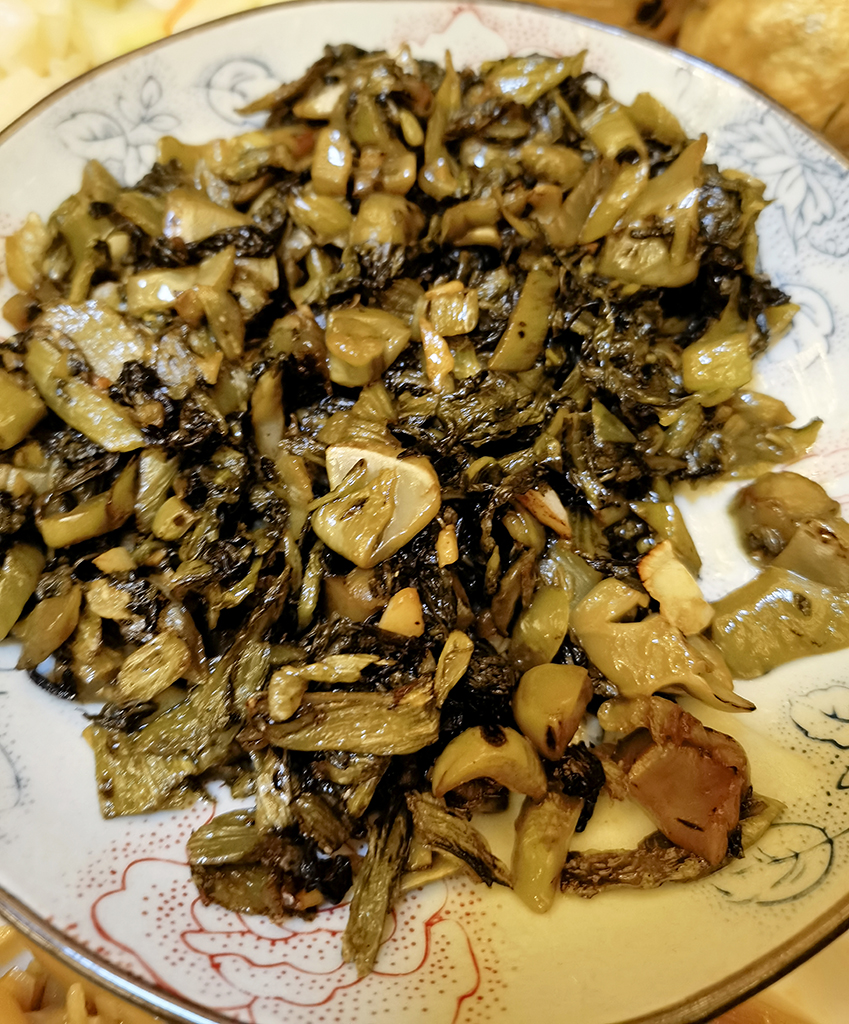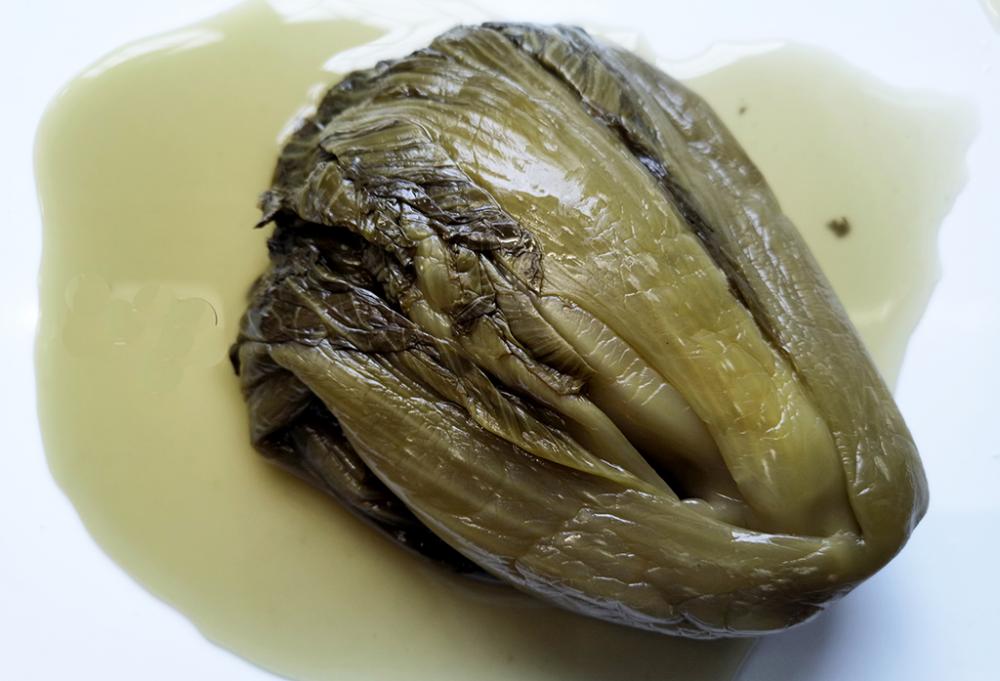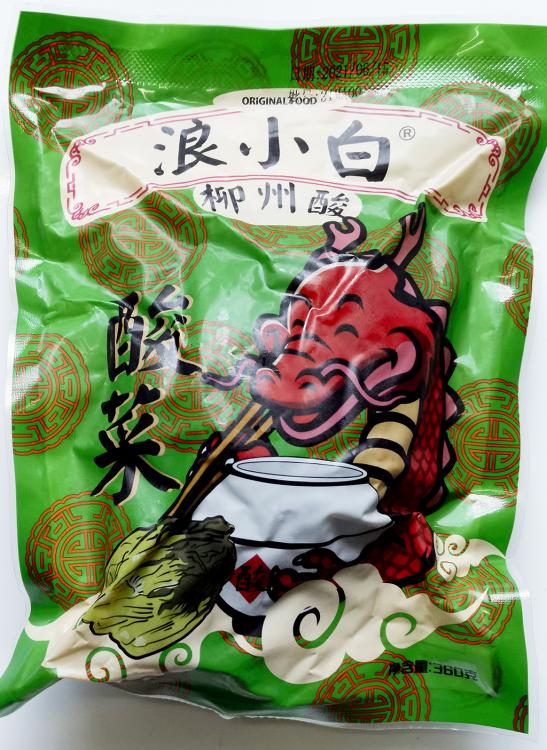For centuries, the Chinese have been pickling and preserving foods. There is almost nothing that they haven't pickled, salted, dried or whatever. Even Germany recognises that sauerkraut originated in China, while most Koreans patriotically deny that kimchi came from China, but it almost certainly did. So, in this thread, I want to mention some of the most common, but also some of the more unusual. It could be a long ride!
1. 酸菜 (suān cài), literally 'sour vegetable'
Suan cai is common across China. However, there are two main types. In Northern China, the preference is for for the vegetable in question to be napa cabbage (大白菜 - dà bái cài), whereas here in the south, we go for stem mustard (芥菜 - jiè cài).
Northern style preserved napa cabbage
Southern style preserved stem mustard (made in Liuzhou)
Whichever vegetable is used, the production process remains basically the same. The whole vegetable is placed in a large jar of water and salt - a simple brine - then compressed by placing a heavy weight on top. Spices may or may not be added. In Hunan, chilli and ginger are often added to the mustard.
Suancai is sold in most markets and supermarkets, but many people make their own.
Commercially produced suancai as found in supermarkets etc.
The preserved vegetable is often served by being finely chopped and served alongside meaty dishes to cut through any fattiness, or can be stir-fried along with the meat. Unchopped suancai is also used in my favourite Chinese fish dish, 酸菜鱼 (suān cài yú), a Sichuan soupy mix of suan cai and fish. Fuschia Dunlop has a very good recipe in her "The Food of Sichuan (eG-friendly Amazon.com link)". Most recipes that I can see on the internet are not very inspiring.

Chopped suan cai as served alongside meat.
Note: Excessive consumption of pickles and salted preserves may be linked to certain cancers, according to many sources including the World Health Organisation and the Chinese Journal of Cancer







